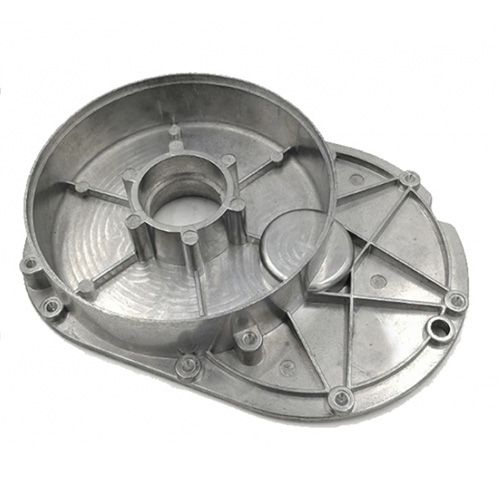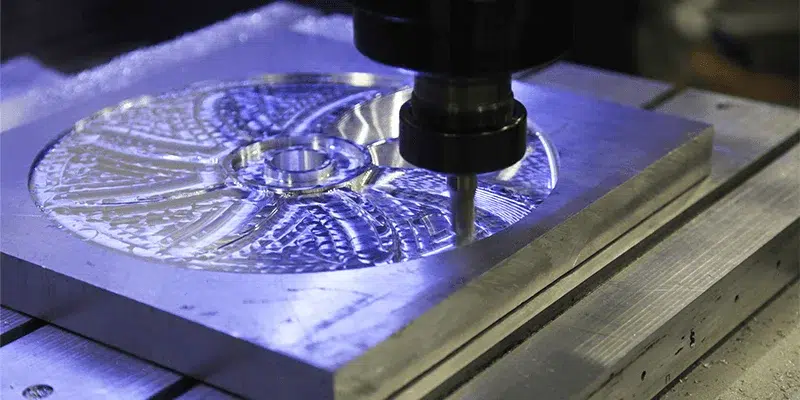A beginner’s manual to Aluminum Casting processes
Wiki Article
Everything You Required to Learn About the Uses and Advantages of Aluminum Castings
Aluminum castings play an essential function throughout numerous sectors, providing distinct residential or commercial properties that improve product performance. Their lightweight nature and strength make them optimal for applications in automotive and aerospace sectors. In addition, the adaptability of casting approaches permits detailed designs and limited resistances. As the demand for lasting options climbs, recognizing the advantages and applications of aluminum castings ends up being increasingly important. What specific benefits do they offer over various other materials?Introduction of Aluminum Casting Processes
Aluminum casting processes include a variety of techniques made use of to shape liquified aluminum into desired types. These techniques consist of sand spreading, pass away casting, and investment casting, each offering unique advantages depending upon the application (Aluminum Casting). Sand spreading includes developing a mold from sand, enabling detailed layouts and big components, while die spreading makes use of high stress to infuse liquified aluminum right into metal mold and mildews, ensuring accuracy and smooth coatings. Investment casting, also recognized as lost-wax spreading, generates complex shapes with excellent dimensional accuracy, making it ideal for comprehensive componentsThese processes are defined by their ability to produce light-weight, sturdy components that exhibit outstanding rust resistance. The versatility of aluminum enables modification in numerous industries, from auto to aerospace. In addition, the ability to recycle aluminum boosts the sustainability of these casting procedures, lowering environmental influence while keeping material stability. Understanding these strategies is essential for enhancing production effectiveness and achieving premium aluminum castings.
Trick Applications of Aluminum Castings
Aluminum castings play a vital role throughout numerous sectors, especially in automobile, aerospace, and customer electronics. In the vehicle field, they contribute to light-weight frameworks that enhance fuel effectiveness. Likewise, aerospace components gain from aluminum's strength-to-weight proportion, while consumer electronics leverage its convenience for effective production.Automotive Market Applications
As the auto industry remains to progress, manufacturers progressively count on aluminum castings for their lightweight yet durable buildings. These castings play an important function in enhancing automobile efficiency, fuel performance, and general safety. Key applications include engine blocks, transmission housings, and architectural components, which benefit from aluminum's outstanding strength-to-weight proportion. Additionally, aluminum castings facilitate intricate geometries, permitting for ingenious layouts that boost aerodynamics and reduce drag. The deterioration resistance of aluminum likewise adds to long life, minimizing maintenance expenses for both manufacturers and customers. As electric cars gain popularity, aluminum castings are essential for battery rooms and other components, even more solidifying their significance in the future of automobile production.Aerospace Element Manufacturing
In the aerospace sector, aluminum castings are important to the production of light-weight, high-performance components. These castings are essential for manufacturing components such as engine housings, architectural frames, and landing gear elements, where weight reduction is important for gas performance and general performance. The superb strength-to-weight ratio of aluminum permits for the development of intricate geometries that improve aerodynamics. Furthermore, aluminum's resistance to deterioration contributes to the durability and integrity of aerospace parts, making certain safety and security in trip procedures. The spreading process also enables for accurate resistances, which is crucial in meeting rigorous aerospace industry requirements. Overall, aluminum castings play a crucial role in progressing aerospace modern technology while sustaining the sector's push for lasting methods.Consumer Electronics Manufacturing
Using aluminum castings in customer electronics manufacturing has actually become progressively significant as a result of their lightweight and long lasting residential or commercial properties. Producers leverage these castings to create components for various devices, including mobile phones, laptops, and gaming consoles. Aluminum's outstanding thermal conductivity additionally helps in heat dissipation, boosting device efficiency and longevity. In addition, the convenience of aluminum enables intricate designs and intricate geometries, allowing smooth and modern visual appeals that appeal to customers. Additionally, aluminum castings can be quickly recycled, aligning with the expanding demand for sustainable manufacturing practices. As innovation advances, the duty of aluminum castings in developing cutting-edge and reliable customer electronics is expected to increase, making them a staple in the market.
Benefits of Using Aluminum Castings
While various products are available for casting, aluminum stands out due to its distinct combination of light-weight residential or commercial properties, toughness, and corrosion resistance. The reduced density of aluminum makes it a perfect option for applications where weight reduction is critical, such as in the automobile and aerospace sectors. Its superb strength-to-weight proportion enables producers to develop durable parts without adding extreme weight.Furthermore, aluminum castings can be created with intricate styles and tight resistances, making it possible for intricate geometries that are tough to attain with various other materials. The convenience of aluminum allows for numerous casting methods, consisting of sand, die, and financial investment spreading, dealing with varied manufacturing demands. Aluminum's ease of machining and ending up enhances its appeal, facilitating the development of high-quality surface area coatings. On the whole, the benefits of making use of aluminum castings add to boosted efficiency and performance in numerous applications across various fields.
Rust Resistance in Aluminum Castings

All-natural Oxide Layer
An all-natural oxide layer types on the surface area of aluminum castings, giving a crucial barrier versus environmental elements that can bring about wear and tear. This thin, safety movie is a result of the aluminum's response with oxygen airborne, properly shielding the underlying steel from moisture, chemicals, and pollutants. Therefore, aluminum castings exhibit excellent rust resistance, which improves their long life and durability in numerous applications. The oxide layer is not just beneficial for protection yet also adds to visual high qualities, as it can create a matte surface that several industries discover attractive. In addition, this natural process decreases the requirement for additional coverings, making aluminum castings an economical option for manufacturers seeking reliable, resilient materials.Alloy Variations Effect
The make-up of aluminum alloys greatly influences their deterioration resistance properties in castings. Various alloy variants, such as 1xxx, 2xxx, and 6xxx collection, show unique levels of susceptibility to corrosion. For circumstances, 1xxx alloys, primarily made up of pure aluminum, deal exceptional rust resistance due to their high purity. On the other hand, 2xxx alloys, which include copper, might experience significant rust when subjected to extreme settings. Meanwhile, 6xxx alloys, incorporating magnesium and silicon, strike an equilibrium between strength and resistance. The visibility of alloying aspects can enhance or lessen protective oxide layers, inevitably affecting longevity and efficiency. Understanding these variants is vital for choosing the best alloy for details applications where corrosion resistance is important.Style Versatility and Modification
Numerous products exist for casting applications, aluminum stands out due to its amazing design versatility and possibility for personalization. This adaptability permits designers and engineers to develop intricate forms and types that meet specific functional demands. Aluminum Casting. The reduced density of aluminum makes it possible for lightweight styles, which is especially advantageous in sectors such as automobile and aerospace, where weight decrease is vitalAluminum castings can be tailored to numerous specifications, consisting of wall thickness, surface finish, and dimensional resistances. This flexibility not only improves the visual appeal but also improves the efficiency of the last product. In addition, progressed techniques such as 3D printing and computer-aided layout (CAD) further facilitate the customization procedure, allowing quick prototyping and reducing preparations. Consequently, aluminum castings can properly meet the diverse requirements of different sectors while supplying manufacturers the capacity to introduce and respond promptly to market demands.
Comparison With Other Casting Materials
While various casting products each have their one-of-a-kind benefits, aluminum continually demonstrates exceptional residential properties that make it a favored choice in several applications. Compared to iron and steel, aluminum is significantly lighter, which lowers the total weight of completed items, boosting gas performance in automobile and aerospace markets. Aluminum supplies outstanding rust resistance, needing much less maintenance over time compared to products like iron, which can corrosion.When compared with plastics, aluminum's stamina and sturdiness exceed many artificial choices, making it appropriate for demanding atmospheres. On top of that, aluminum's thermal and electrical conductivity is incredibly greater than Aluminum Casting many other metals, making it ideal for applications needing efficient warm dissipation or electric elements.

Future Trends in Aluminum Casting Modern Technology
Developments in aluminum spreading technology are set to redefine its applications throughout various industries. Technologies in automation and robotics are streamlining production processes, boosting effectiveness and precision. The assimilation of man-made knowledge and artificial intelligence enables real-time tracking and anticipating upkeep, reducing downtime and enhancing quality control.Additionally, the development of advanced alloys is expanding the performance capabilities of aluminum castings, making them suitable for more requiring applications, especially in auto and aerospace industries. Sustainable techniques are additionally getting grip, with raised emphasis on recycling aluminum and lowering carbon footprints during production.
Additive production strategies, such as 3D printing, are being discovered to produce complex geometries that typical methods can not achieve, enabling higher style versatility. These trends show a future where aluminum spreading will certainly not just satisfy however exceed market expectations, driving development and sustainability in manufacturing.
Regularly Asked Inquiries
Exactly How Are Aluminum Castings Recycled After Usage?
Aluminum castings are usually gathered, cleaned, and processed in recycling facilities. The material is melted down, improved, and after that reformed right into brand-new items, thus conserving resources and decreasing environmental effect while preserving aluminum's preferable residential or commercial properties.What Are the Normal Prices Related To Aluminum Castings?
The common prices related to aluminum castings differ based upon elements such as intricacy, volume, and product specs. Normally, prices range from a few dollars per pound to considerably higher quantities for intricate layouts and big quantities.How Do Aluminum Castings Contrast in Weight to Steel Castings?
Aluminum castings weigh significantly less than steel castings, usually around one-third the weight (Aluminum Casting). This decreased mass enables for easier handling, transport, and application in various sectors, adding to boosted efficiency in style and production proceduresWhat Industries Primarily Rely Upon Aluminum Castings?
Various sectors considerably rely upon aluminum castings, including auto, aerospace, electronic devices, and customer goods. Their lightweight nature, rust resistance, and adaptability make them important for making parts in these sectors, enhancing efficiency and performance.Exist Any Kind Of Wellness Dangers Connected With Aluminum Casting Processes?
Health risks connected with aluminum casting processes include direct exposure to fumes, dirt, and chemicals, which can lead to breathing issues and skin inflammation. Correct safety procedures and devices are vital to reduce these possible dangers in the office.Report this wiki page